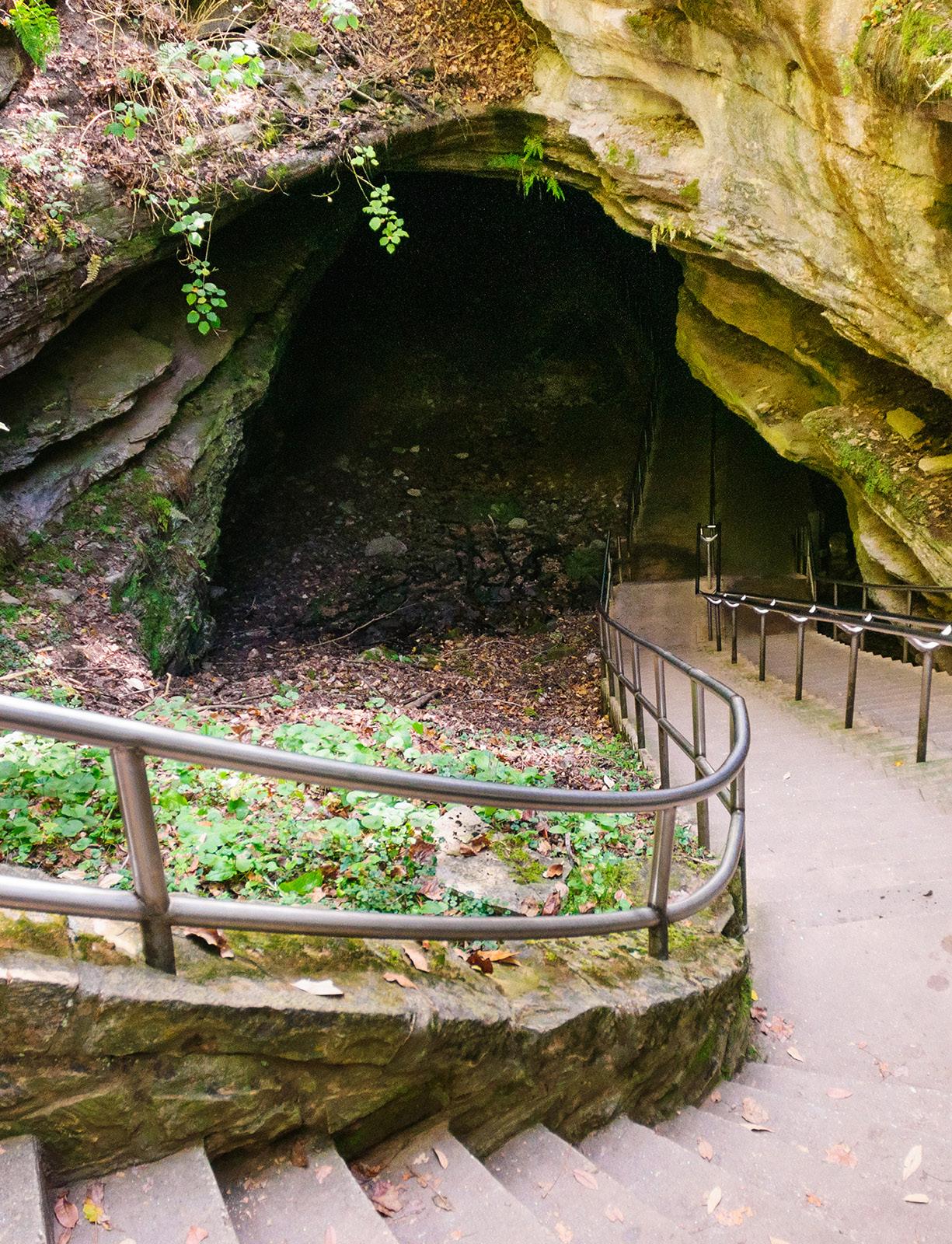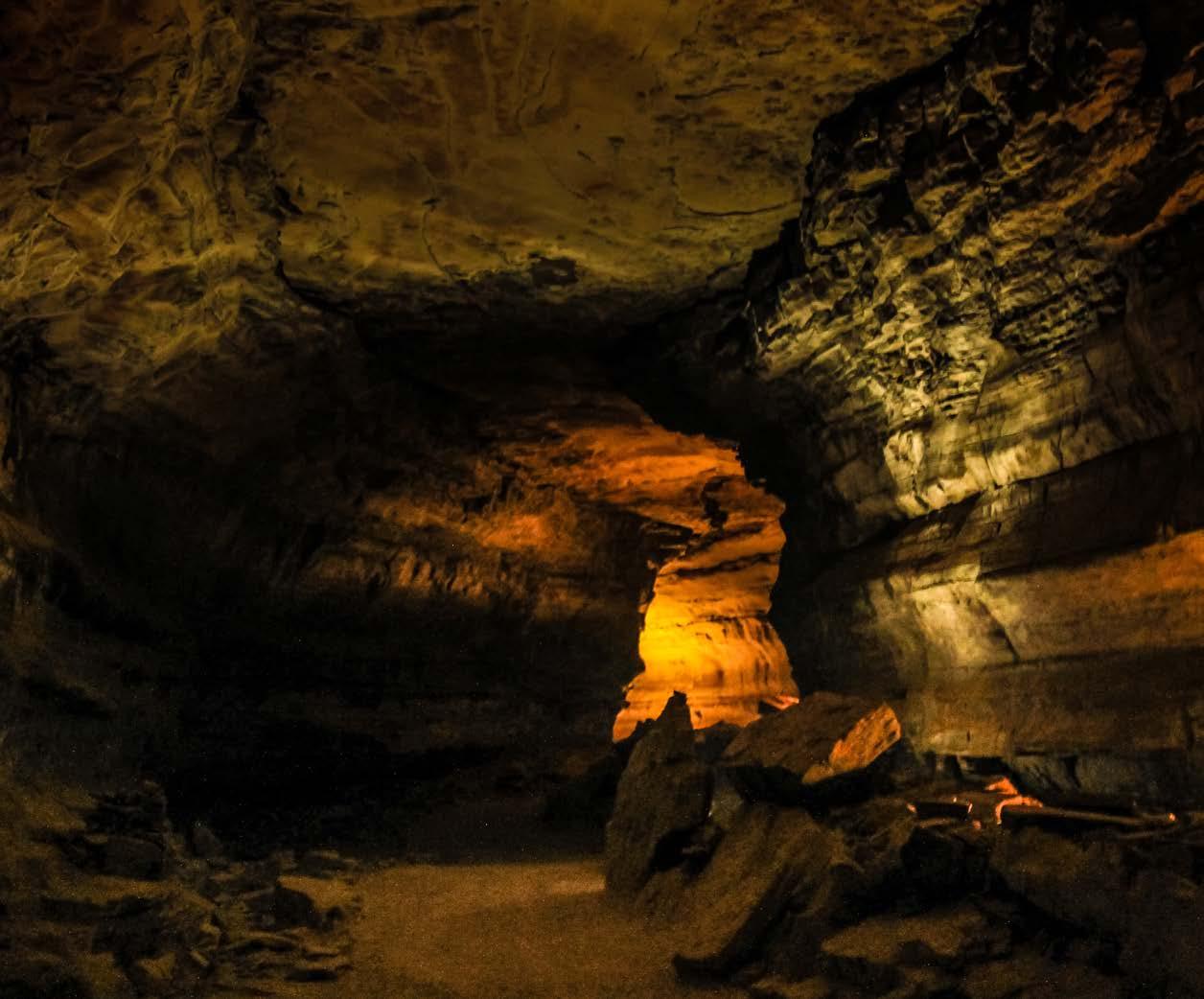
4 minute read
Mammoth Cave National Park
With rolling hills, lavish forests and deep, green river valleys that give way to the world’s largest known cave system below, Mammoth Cave National Park is both a UNESCO World Heritage Site and International Biosphere Reserve.
The human history of the Mammoth Cave area reaches back 12,000 years to prehistoric peoples, though the cave itself was not explored until at least 7,000 years later. Hunter-gatherers discovered Mammoth Cave — and mined for minerals like gypsum — thousands of years before European settlers arrived, benefiting from the abundant resources.
To this day, Mammoth Cave staff continue to consult with those traditionally affiliated with the park lands. This includes the Eastern Band of Cherokee Indians, Cherokee Nation, United Keetoowah Band of Cherokee Indians, Shawnee Tribe, Eastern Shawnee Tribe of Oklahoma, Absentee Shawnee Tribe, and the Chickasaw Nation.
From cave tours to ranger-led programs, fishing and canoeing, there are many ways to walk in their footsteps and appreciate the breadth — and rarity — the park has to offer.
The Flora And Fauna
While the park’s subterranean karst topography and limestone layers steal the show, there’s much waiting to be explored above ground, too. Complex and intertwined, the surface and the subsurface support a diversity of species — 70 of which are endangered, threatened or of special concern. From winged wonders to mammals, insects, reptiles, crustaceans, mussels and even eyeless, cave-dwelling fish, there’s something fascinating wherever you turn.
Nutrients are fed from the surface to the caves deep below from the verdurous Green River Valley and leafy deciduous forests. In fact, 160 animal species regularly inhabit the caves, adapting to — and prospering in — the damp, dark environment. Among them are Allegheny woodrats, cave crickets and big-eared bats.
Within the park’s 52,830 acres, over 1,300 plant species have been identified as well, 25 of which are listed as endangered, threatened or of special concern. Hardy cedars and pines in higher elevations contrast valleys dotted with beeches and tulip poplars, with their showy blooms. A rainbow’s-worth of flowers blanket the park during spring and summer, from ornate passionflower vines to 20 species of goldenrod. Mosses, lichens and liverworts cling to rocks, tree trunks and forest floors. And freshwater flora — cattails, waterlilies and black willows, to name a few — grow along rivers, streams and small ponds.
The Weather
Home to KY Bowling Green 21 NNE — an observation station established by the National Oceanic and Atmospheric Administration — Mammoth Cave tracks long-term temperature, precipitation, soil moisture and temperature.
Climatically moderate with warm, moist conditions, summers see averages in the high 80s F, while winters are typically in the low 40s F.
Situated in the wettest park of the state, Mammoth Cave sees an average of 50 inches of precipitation per year, mostly in spring. Snow and ice do occur in winter. Tornadoes and flooding in low-lying areas may happen year-round.
Before visiting the park, visit its website for up-to-date weather conditions and trail and road closures.

Visiting Mammoth Cave
You must purchase tickets in advance to enter the caves, choosing between tours that are wheelchair accessible, walking tours of varying lengths, lantern tours and — not for the faint of heart — crawling tours. Whether you settle on the Gothic Avenue tour with its unusual rock formations that recollect Gothic architecture or the domes and dripstones tour that starts at a sinkhole, passes through huge domes and heads to the dripstone section, Frozen Niagara, adventure is in store.
The Hikes, Drives and Viewpoints
Green River Bluff, Echo River Springs, Sinkhole and Heritage Trails
Combined, the moderately challenging, 4.5-mile Green River Bluff, Echo River Springs, Sinkhole and Heritage Trails traverse a bluff area along the Green River; past hidden caves, waterfalls and captivating rock formations; through tunnels and flora; and even past babbling brooks.
Echo River And River Styx Spring Trail
The 3.4-mile, out-and-back Echo River and River Styx Spring Trail reveals rich geologic and biological diversity, taking you to the underground Echo River, which emerges from Mammoth Cave to the surface.
Cedar Sink Trail
See seasonal wildflowers on the diverse, forested, one-mile Cedar Sink Trail, which descends into the sink hole before climbing back out via a total of 295 stairs.
About The Park
Location - South-central Kentucky
Established - July 1, 1941
Area - 52,850 acres










